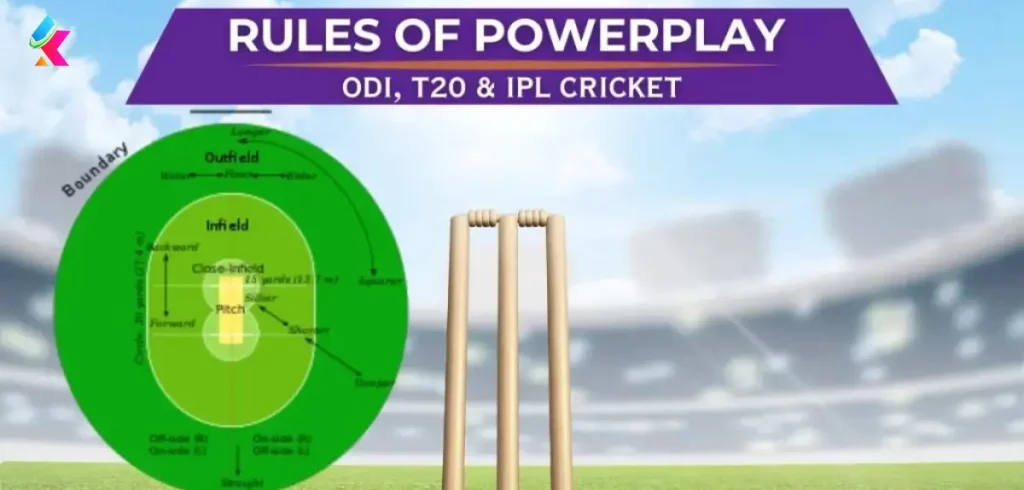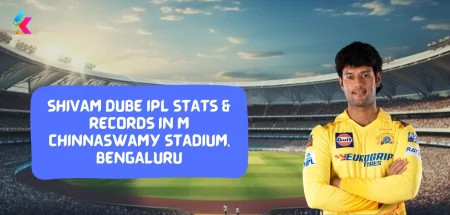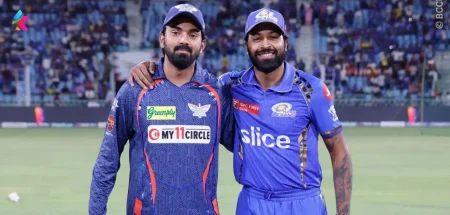Be it a T20 or ODI, Powerplay makes the game more exciting and engaging. Yes, it is confusing to understand at first but with decent explanation and learning, one can understand the importance of Powerplay in Cricket. Moving ahead, we will discuss power play rules, their types and formats, but first, let’s focus on some other crucial points.
What is Powerplay in Cricket?
A name of the fielding setting in the limited overs format of Cricket is called a Power Play. During Power play, only 2 fielders are allowed outside the 30-yard circle for the first 10 overs in an ODI match and the first 6 overs in a T20 match. Please note that there is no Power play in the Test format of Cricket.
Rules of Powerplay in ODI Cricket
With time, we all have witnessed significant changes in Power play rules in the ODI format coming from the ICC (Indian Cricket Council) rules book.
P1 (to be taken in between 1st to 10th over):
P1, also called Powerplay 1, is a mandatory Powerplay to be taken, allowing a maximum of 2 players outside the 30-yard circles in 50 overs match.
P2 (to be taken between 11th to 40th over):
This Powerplay in ODI cricket allows 4 players outside the 30 yards circle of the ground.
P3 (to be taken between 41st to 50th over):
Powerplay 3 allows a maximum of 5 players outside the 30 yards circle of the playground.
All the 3 ODI powerplay rules are essential to be taken by any team; if any team ignores these rules, the umpire will declare the ball delivered as no ball or might be charged with some other penalties.
Power Play Rules in the T20 format of Cricket
There is only one main rule for Powerplay in T20 format, and it is easy to understand.
Powerplay 1 (to be taken in between 1st to 6th over):
Maximal 2 players are allowed outside the 30 yards circle of the field.
From the 7th to the 20th over of the inning, only 5 fielders are allowed outside the 30 yards circle.
One important rule related to fielding in T20 Cricket –
Leg side rule:
You haven’t heard this earlier, but a maximum of 5 players or fielders are allowed on the leg side from beginning to end of the match of 20 overs.
What are Batting Power play rules?
The batting team took a Batting Powerplay in Cricket for 5 overs. They had the liberty to enforce fielding restrictions in the bowling team.
Later Indian Cricket Council (ICC) marked it required to utilize the batting powerplay by the 36th over of an inning. In 2015, the batting powerplay was discontinued and reinstated by mandatory Powerplay.
What are bowling Power play rules?
A bowling Powerplay in Cricket was a sequence of 5 overs to be chosen by the bowling team in which they were allowed to enforce the field restrictions as per them.
The term’ Bowling Powerplay’ was introduced to differentiate between the two Powerplays, i.e., Batting Powerplay and Bowling Powerplay.
Later ICC discontinued the rule in 2012.
Does Test Cricket have any Power Play rules?
There is no powerplay in Test cricket. The rules, format, and appearance of Test cricket are way more different than any other format, be it ODI or T20.
One test match consists of 5 days where players must be examined based on patience, learning, skills, and discipline for the game.
History of Power Play Rules in Cricket
It can be easily noticed that the power play rules in T20 have not changed much unlike ODIs. There is a significant history of changes in the format and rules of Powerplay in One Day Internationals.
The utmost reason behind the big changes is the consistency of the gameplay. At first, it was difficult for any players to differentiate between an ODI and a Test match.
The limited-over format was introduced in the 1970s. And it was very important for the players to understand the format and get out of the mindset they carried playing a Test match.
The perfect example of the same is Sunil Gavaskar’s slowest innings, 36 runs in 174 balls. No one even as a fan can imagine such an inning today.
The need to play to score runs rather than save the wicket was needed in ODI then.
To develop this mental makeup, Powerplays entered into the scene or you can say, to make the game more exciting and interesting, the fielding instruction or powerplay in ODI cricket was introduced.
1980 – Introduction to Field Restrictions
The first field restriction was passed in 1980 in Australia. It consists of the limitations on the number of fielders allowed to be set outside the 30 yard circle of the playground.
As a result, the batsman got the opportunity to score more runs at the time the fielding restriction was applied. For the bowling side, bowlers were able to scratch more wickets in the beginning of the game, as the batters were taking risks initially to score more. The word Powerplay in Cricket was not in the scene at that time.
1992 – Changes in Last Field Restrictions
The International Cricket Council (ICC) introduced little changes in the last field restrictions.
According to the new restrictions, the bowling side was required to place at least 2 fielders in the catching position at the time fielding restrictions were applied on the ground.
However, other previous field restrictions or Power Play rules (terms not in use then) remained the same.
2005 – Official Introduction to ‘Powerplay’ with some changes
The coming of the T20 cricket format carried the term ‘Powerplay’ with it. In the year 2005, ICC named field restrictions to Powerplay. Some of the noticeable changes made were –
- Increase in the number of overs under a Powerplay, 15 overs to 20 overs.
- The Powerplay overs were divided into different sets. 1 set of 10 overs and 2 sets of another 10 overs.
- The previous rule of two fielders in catching position for 15 overs gets reduced to 10 overs. The rule is applicable on the same for the first 10 overs only of the innings.
- One of the most crucial changes was the change for the bowling team. Now they can select the two sets of 5 overs Powerplay anytime between 11-45 overs.
After some time, i.e., in 2008, rules changed for the Powerplay in Cricket.
2008 – Change in Power Play Rules
Giving a batting team an opportunity to choose the period of one of the two 5 over Powerplay was the foremost purpose of this change in Powerplay in Cricket.
You can understand it by looking at the middle-period performance of the batsmen so far. It was easy for the batsman to score well at the beginning and the end of the inning. Hence, this change in rule was introduced to maintain the pace and lessen the dullness in the middle time of the innings.
But the result was something else, batting teams started taking the stated Powerplay in the last 5 overs where the player had no great margin to lose on bowlers.
Since, reason for this the impact of batting powerplay faded with time resulting in some further changes to it.
2012 – Minor Changes to Powerplay in Cricket
Some of the most awaited changes to be made in the ODI Powerplay Rules were introduced by ICC in 2012. They were minor but crucial.
Starting in 2011, ICC made it compulsory for both batting and bowling Powerplays to be taken in between 16 to 36 overs anyhow without befalling each other.
Following the previous one, 2012 brought some other changes. ICC decreased the number of Powerplays to two. The mandatory powerplay in the first 10 overs of the game with batting powerplay has to be taken within 16 to 36 overs. In support of this change in Power Play rules, the 30-yard rule was also changed from 4 players to 5 players during non-powerplay overs.
2015 – Ongoing Power Play Rule in Cricket
The journey of changing Power Play Rules continued to flow and once again the game of cricket witnessed changes to introduce more balance into the gameplay. The 2015 changes are the same till date (at the time of writing/publishing)
The changes were –
- There are a total of 3 Powerplays in ODI matches.
- All the 3 Powerplays are considered mandatory.
- Separate Powerplays for Bowling and Batting do not exist from now onwards.
- Powerplay 1 is of the first 10 overs, Powerplay 2 is of next 30 overs and Powerplay 3 is of last 10 overs.
- Most important: The removal of a minimum of two fielders in the catching position for the first 10 overs.
What do you mean by a 30-yard circle in Cricket?
A visionary circle on the cricket playground affecting the fielding instructions during the Powerplay overs in the limited overs format of cricket.

Understand it better with the help of the image given below.
Final Verdict
Power play rules in T20 and ODI act like a cherry on the cake, making the game more exciting and a must-match for the viewers. We hope you find the information mentioned above reliable and valuable for clearing doubts about Powerplay, its types and rules.
FAQs for Powerplay in Cricket
What are Power play rules in T20 cricket?
How does Powerplay in ODI cricket work?
Powerplay 1 (to be taken in between 1st to 10th over):
P1 is a mandatory Powerplay to be taken, which allows a maximum of 2 players outside the 30-yard circles in 50 overs match.
Powerplay 2 (to be taken between 11th to 40th over):
This Powerplay in ODI cricket allows 4 players outside the 30 yards circle of the ground.
Powerplay 3 (to be taken between 41st to 50th over):
P3 allows a maximum of 5 players outside the 30 yards circle of the playground.












